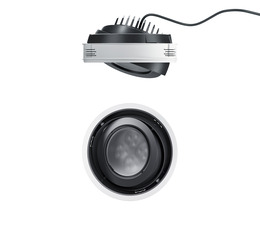The effective game of opposites: focused light in absolute darkness lets you forget space and time. A visit to the Feuerle Collection in Berlin is an unforgettable experience for all art lovers. This is due to the exquisite, as well as unconventional, character of this collection, its special presentation location and its highly effective staging. Light plays a major role in this.
Berlin has an extensive series of important private art collections that are open to the interested public. The Feuerle Collection, opened in Kreuzberg in 2016, stands out from this illustrious circle in many respects. This is mainly due to the unique design of the collection. Désiré Feuerle, a discreet and influential personality on the international art scene, combines works by renowned contemporary artists - such as Anish Kapoor, Zeng Fanzhi, Cristina Iglesias and Nobuyoshi Araki - with sculptures of Khmer culture from the 7th to the 13th centuries as well as furniture from the Chinese imperial court created between 200 BC and the early 17th century (from the Han to the Qing Dynasty).














